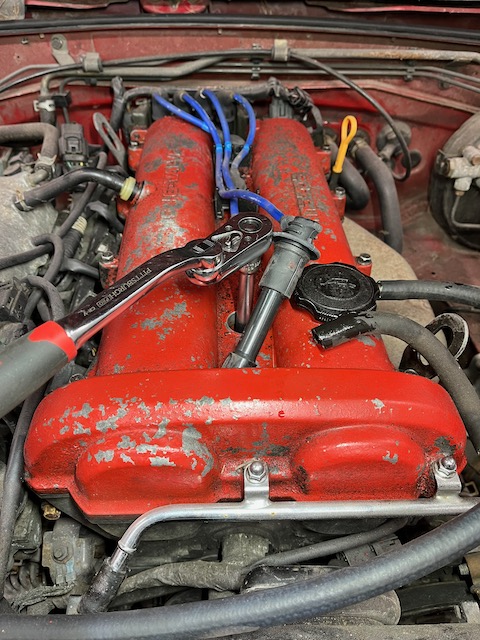Your cart is currently empty!
Miata Tool Recommendations
Every DIY article / how-to guide on our website will list the tools required to complete a project or repair. Our goal is to make fixing Miatas accessible to anyone – not just professional mechanics outfitted with full shops. If you want to only purchase tools one-off as they are needed – go for it! However, if you are starting without any tools, it might be best to purchase some of the most common “essentials” listed here.
Below is our list of recommended tools for the DIYer to get in to working on their Miata. Please keep in mind that this site is for hobbyists and weekend warriors NOT professional mechanics. You won’t find recommendations for expensive Snap-On tools here – we advise shooting for “value” in tool buying – tools that will last a long time but won’t break the bank!

Essentials
Hand Tool Socket Set – This particular kit includes an assortment of 1/4″, 3/8″, and 1/2″ socket sizes, as well as hex keys / allen keys. More importantly – all of the included sockets are 6-point sockets, which grip better than the 12-point sockets commonly found in basic sets like this.
Screwdriver Set – You’ll want a variety of screwdrivers in a kit like this one. Philips screws are still used all throughout cars, particularly when working on the interior. You won’t find too many flat head screws anymore, but flat head screwdrivers are still used all the time in automotive work as miniature pry tools and for loosening up hose clamps.
Floor Jack – Miatas are low cars, and many are modified to be even lower. This floor jack will fit underneath to get them in to the air.
Jack Stands – You can’t have a floor jack without jack stands. These will save your life, and you should never get under a lifted vehicle without them securely in place. We like this set because they have a double locking mechanism that uses a pin for better safety.
Torque Wrench – As you advance from minor jobs, such as oil changes, into more serious ones, such as timing belts or suspension replacements, you will want to pick up a torque wrench. We like digital torque wrenches over the old-school click-style ones. It’s faster to dial in exactly what torque setting you want, and it’s nice to be able to check the digital readout to see what the current torque is as you are getting close to spec.
Diagnostics and Troubleshooting
Code Reader – An OBD2 diagnostic scanner is well-worth having for a home DIYer. While most auto parts stores will read Check Engine Light codes for free, that isn’t helpful when the store is closed, or your car is stuck at home up on jack stands (or not running at all!). A word of advice on code readers – don’t waste your money on the cheapest ones out there. They have very limited functionality. At bare minimum, if you are going to spend the money on a scanner, get one like this that can view live data while the car is running. This can save lots of time when you are troubleshooting!
Multimeter – A multimeter is one of the best bang-for-your-buck investments when it comes to troubleshooting. If your Miata isn’t starting and you want to check if it is a bad battery or a bad starter, you can do so in a few minutes. If you want to test and confirm that a sensor is bad before spending on a money on a new one, most automotive sensors can be tested with a multimeter. Don’t waste money and time replacing parts that might not be bad! Use a multimeter and save yourself time and money.
Cooling System Pressure Tester – Coolant leaks lead to overheating, and can be one of the fastest ways to kill an otherwise reliable car. And unfortunately, coolant leaks can be tricky to find, as they don’t always reveal themselves at idle speeds when you are in your garage troubleshooting. A pressure tester allows you to test the integrity of the system at higher pressures that may only be reached when driving.
Fuel Pressure Gauge – This isn’t a tool you’ll use often, but you’ll swear up and down by it when you do. If you have a Miata that won’t start, or a Miata that won’t stay running, one of the best tests that you can do is to verify fuel pressure. A test like this is absolutely worth doing before you spend the time and money unnecessarily replacing a fuel pump.
